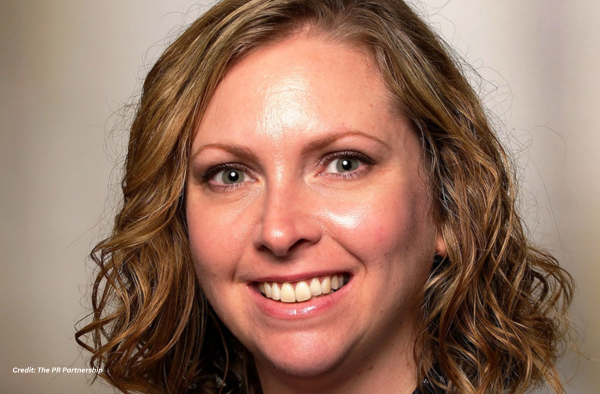The cycle of zero vacancy, unprecedented capital investment, and robust double-digit rental growth in our industrial property markets, spurred on by the global pandemic, is nearing its conclusion, according to leading agency Savills Australia’s recently released Shed Briefing Report.
The surge in warehousing demand driven by the pandemic is displaying signs of deceleration, with companies adopting a more cautious approach to leasing and investment decisions in an uncertain economy.
“The trend reflects the structural shift of businesses to focus on supply chain resilience as they aim to streamline inventory stockpiles, mitigate disruptions, and manage costs,” said Katy Dean, Head of Research at Savills Australia.
Rental growth rates for industrial property in 2024 are forecast to edge closer to pre-COVID trends as demand eases thanks to sustained inflation and a high interest rate climate. Despite a lack of new projects, vacancies are predicted to inch up slightly amid broader economic uncertainty and slowing employment.
“After a sustained upward trajectory, we now see signs that industrial rental growth rates are easing. We are not seeing available space flood the market, but we are starting to see some signs that the pace of activity is gradually decelerating,” she said.
Investment transaction volumes are also declining and have dropped by 24% compared to this time last year, the latest Shed Briefing Report reveals.
Dean suggests that the journey towards normalisation is evolving in two distinct phases, with cyclical challenges characterised by prolonged interest rate hikes, persistent inflation, and elevated global risks. Conversely, Australia’s strong population growth and tight labour market conditions counterbalance these broader economic challenges.
Michael Wall, National Head of Industrial & Logistics at Savills Australia, said yet, despite the rising cost of borrowing limiting select capital inflows to industrial property, the repricing of industrial has been less severe relative to other commercial property sectors, with the resilient fundamentals positioning the sector at the forefront for investors seeking out direct real estate options for its long-term outperformance.
Quarterly Industrial Rental Growth Slows in Core Markets to Lowest Since Pandemic
Savills’ Shed Briefing Report found that across Australia’s key core industrial markets (Sydney West, Melbourne West, Brisbane Southside, Perth Core, and Adelaide’s Inner West), average prime nett face rents are up by nearly 50% compared to pre-pandemic levels.
“At its peak in Q2-2022, quarterly growth for these five core markets averaged more than 7.2%. While rental growth remains elevated compared to the historical annual average of 2.7%, it has now slowed to just over 1%, which is its lowest level in two years,” said Dean.
“This is a clear indicator that the strong rental growth cycle is over. We expect the pace of growth in new leasing for the next 12 months to align closer to pre-pandemic trends as competitive tension for space eases while decision-making elongates.” “There’s still some reversionary upside to flow through on leases due to expire,” says Wall.
“Rental growth has outpaced inflation, and with indexation levels now forecast to remain elevated, the path to normalisation may take some time to pass through, especially given the still low vacancy rate and delays to leasing activity in 2024.”
Australia’s industrial markets on the East Coast are the largest nationally, with Sydney West, Melbourne West, and Brisbane Southside accounting for some 40% of the 82 million square metres of industrial stock across 18 precincts tracked by Savills and SA1 Property. The report revealed that at its peak in Q2-2022, quarterly rental growth for these three core industrial markets averaged 7%, significantly higher than the most recent average growth rate of 1.8% in Q3-2023.
Sydney West Outperforms: Lowest Vacancy and Highest Rental Growth Over Three Years
Prime nett face rental growth has stabilised in Sydney West after 11 consecutive quarters of sustained rental growth, peaking at nearly 17% in September 2022. In annual terms, prime nett face rents are showing growth of 19.7%.
Among the three core markets, Sydney West has the lowest vacancy rate, at less than 1%. Vacancy is even lower in large industrial facilities over 10,000 square metres. Savills Australia’s Shed Briefing Report shows that prime nett face rents in Sydney West have experienced the steepest growth rate over the last three years of more than 82%, significantly higher than any other precinct in Australia.
Melbourne West: Modest Rental Growth
In Melbourne West, prime nett face rents grew 1.9% quarter-on-quarter on the back of eight quarters of consecutive growth, including peak growth rates of 7.7% in Q2-2023 and 20% in Q1-2023. Melbourne West average prime nett face rents have risen by 40.3% over the last 12 months and are up 64% since 2020.
Brisbane Southside: Strongest Quarterly Rental Growth
Prime nett face rents in Brisbane Southside showed the strongest growth rate of the three core markets in Q3-2023, rising 3.5% over the quarter after three consecutive quarters of growth of between 3.6% and 3.9%. Prime nett face rents in Southside have risen 15.7% since September 2022 and 25.5% over the last three years.
Australia’s Industrial Sector’s Unprecedented Growth Post-Pandemic Coming to an End
Wall said the expansion of Australia’s industrial and logistics sectors over the past three years has been extraordinary. However, despite persistently low vacancy conditions, there are early signs that a return to pre-pandemic normality is already underway as the market adjusts to caution in the broader economy, with demand reducing in response to increased scrutiny of inventory being held.
“This experience in Australia echoes global sentiment; we see the same patterns in international industrial markets after years of heady capital growth and yield compression,” Wall said. Savills Australia’s Shed Briefing Report revealed that industrial vacancy rates have started to edge up in the tightly held east coast markets. “There has been a slight uptick in the vacancy rates as decision-making on space requirements extends and developers delay new construction starts. Sub-lease space has also started to filter into the market, further elevating vacancy rates,” he said.
| WHOLE BUILDING VACANCY – INDUSTRIAL |
| Market |
Vacancy Q3 2023 |
Vacancy Q2 2023 |
| Sydney |
1.43% |
1.09% |
| Brisbane |
2.0% |
1.9% |
| Melbourne |
1.85% |
1.96% |
Source: Savills and SA1 Property
Amid a broader sentiment of caution in the general economy, manufacturers are reducing inventory holdings, while cost pressures remain elevated due to inflation. The Savills Australia Shed Briefing Report also highlighted that employment in the sector is starting to slow down. Industrial job ads peaked in mid-2022, and while they remain at almost double the pandemic low, job ads have cooled significantly in recent months.
New Supply Choked by Critical Land Shortage
Australia’s core industrial markets remain characterised by a shortage of land – with Melbourne and Sydney both having a scarcity of serviced sites zoned for development. “Development starts have been pushed out and some markets still face a critical undersupply of land. Most markets average commitment rates above 30% on new supply, but delays to spec project starts coupled with prolonged decision-making will increase competition for space when the economy stabilises in 2024,” Dean said.
Total leasing volumes for industrial property over 3,000 square metres reached around 1.22 million square metres in Q3-2023, up from 1.1 million square metres in Q2.
Industrial Investment Down by 24%
According to Savills Australia, industrial investment has some way to go to restore to long-term levels, with transaction volumes down by 24% compared to this time last year. The trend suggests that the period of price discovery is ongoing but importantly, up to this point in the cycle, rental growth has helped to offset any capital value decline. “While there has been some capital recycling to allow redeployment, there are no signs of distress in the sector with assets trading at or near book values,” said Dean.
Any rebound to investment activity, particularly large-scale transactions, remains muted on concerns that the market is stuck in a continued high interest rate environment. Driven by Australia’s demographic tailwinds, liquidity levels for smaller scale transactions are sustained. According to Savills, deals at the upper end of the market are predicted to emerge under more stable interest rate conditions likely in 2024.
Mr Wall said to date, repricing in the sector has been modest with strong rental growth helping to protect capital values. However, yields continue to drift outwards reflecting the headwinds facing Australian property more broadly, including high interest rates, elevated inflation and prolonged decision making. Across the east coast markets, prime yields have move out an average 16bps, while in Adelaide and Perth, they have increased 12.5bps and 25bps respectively.
Justin Lavadia is a content producer and editor at Public Spectrum with a diverse writing background spanning various niches and formats. With a wealth of experience, he brings clarity and concise communication to digital content. His expertise lies in crafting engaging content and delivering impactful narratives that resonate with readers.























































